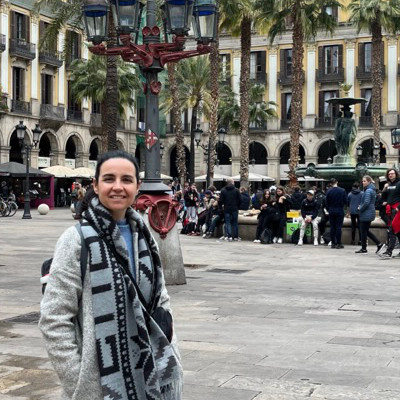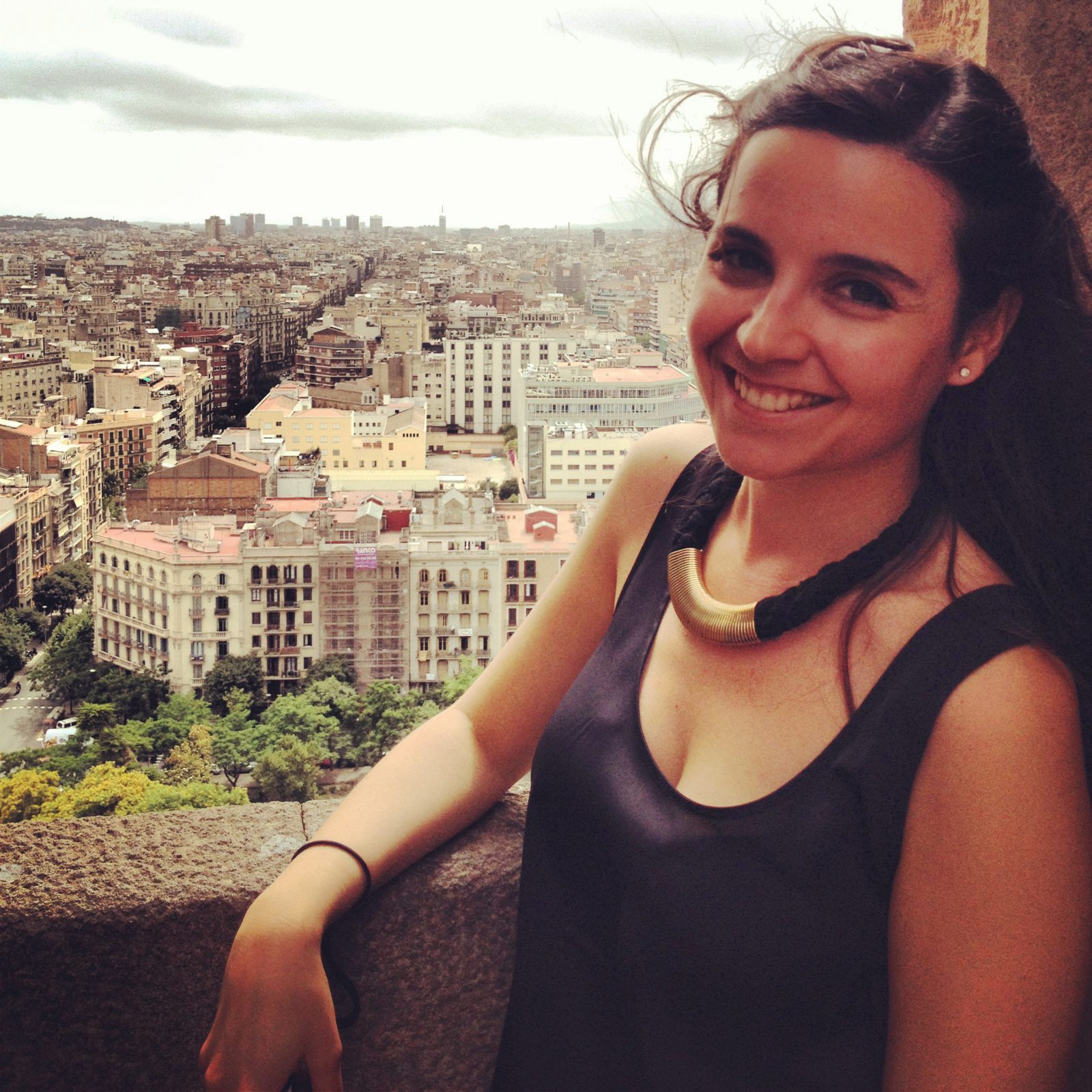Adjacent to the famous Boqueria Market, the Gran Teatre del Liceu (or simply Liceu in Catalan or Liceo in Spanish) is one of the most striking buildings on the Ramblas. This opera house, built in 1847, is a symbol of the city and has survived two fires, a flood, and a bombing. Music enthusiasts can enjoy beautiful (opera) concerts here, but there is also plenty to see and discover at El Liceu during a guided tour.
What to See and Do at the Gran Teatre del Liceu
Whether you’re drawn by the beautiful architecture or as a music fanatic, the Gran Teatre del Liceu in Barcelona does not disappoint. As a century-old cultural institution, El Liceu enjoys great fame both domestically and internationally. Below, I’ll tell you which parts of the Teatre Liceu are the most interesting.
The Opera House
The building that houses Teatre Liceu dates back to 1847, but has been destroyed several times, and thus has had several adjustments. Only the façade, the grand entrance in Renaissance style, and the Mirror Room are still original.
The opulent concert hall was rebuilt almost as it was after the 1994 fire. Here, the eye enjoys all the splendor and riches of yesteryear: from richly decorated ceilings, walls with gold, velvet chairs, and private balconies. The paintings on the eight medallions on the ceiling and on the arch of the proscenium are the work of the painter Pere Jaume, while the current velvet curtain was designed by Antoni Miró. With a capacity of 2,292 spectators, El Liceu is one of the largest opera houses in Europe.
The Mirror Room, next to the imposing concert hall, is one of the most remarkable rooms you’ll encounter in Teatre Liceu. This intermediate room was spared by the 1994 fire and carefully restored, with its beautiful ceiling paintings and the inspiring texts that refer to art and music.

El Cercle del Liceu
El Cercle del Liceu is one of Spain’s oldest still active clubs, founded in 1847, the same year as the Gran Teatre del Liceu. It’s a private club in English style with unique artistic heritage. With about a thousand members, this space offers a series of elegant rooms, a conference room, a restaurant, and other spaces in an emblematic building that is part of the Gran Teatre del Liceu. During the guided tour, you visit four of the rooms on the chic floor of the Cercle: the chimney room, formerly the hearing room; the grand hall, which used to serve as a dance hall; Alexandre de Riquer’s room, probably the most beautiful dressing room you’ve ever seen; and the rotunda, the former game room and place to read the newspaper. Everywhere you look, you see valuable artworks, including those by Ramon Casas and Rusiñol.
El Cercle also organizes various events, exhibitions, concerts, and conferences throughout the year, involving both its members and personalities from Barcelona’s cultural circle.
Attending the Opera
Music and theater lovers should consider buying tickets for a performance at Teatre Liceu. This is one of the best concert and theater halls in all of Europe, so the standard is high. Moreover, visiting El Liceu during a performance is enchantingly beautiful: you get the most out of this century-old opera house and experience what it must have been like to go to the opera here in the past.
Due to the popularity of Teatre Liceu’s performances, it’s advisable to buy your concert or performance tickets in advance. This can be done online or at the box office. If you live in Barcelona and plan to visit Teatre Liceu more often, you can also take a subscription. If you go to the opera, you should dress neatly.

Teatre Liceu for Children
El Petit Liceu is the smaller version of Teatre Liceu, specially designed to introduce children to opera, classical music, and theater. Most performances are for children from 6 or 7 years old, but occasionally there are puppet shows for children from 3 years old. From the stories of the Brothers Grimm or the music of Mozart to family opera performances by renowned artists like Rossini. Keep an eye on the schedule for the current program.
Cafè de l’Òpera
Located across from the opera house, at La Rambla number 74, is this old-fashioned café, an interesting place to visit as it was the meeting spot for the audience of El Liceu before and after performances. This place has existed since the late 1920s, and it’s evident in every aspect of the interior. It’s the perfect spot for a cup of coffee and some churros with a touch of nostalgia.
Rocambolesc Ice Cream Shop
If you (or your children) are hungry after a visit to the Gran Teatre del Liceu, then you should stop by the Rocambolesc ice cream shop, located next to the entrance of the theater. It’s a renowned spot among ice cream lovers looking for original and delicious ice cream flavors, in a beautiful setting.
History of the Gran Teatre del Liceu
Liceu was founded in 1837 after Manuel Gibert and other military members started a theater group, the Sociedad Dramática de Aficionados, in the former Montsió convent, located on Carrer de Montsió near Portal de l’Àngel. In 1838, the group changed its name to Liceo Filarmónico Dramático Barcelonés de SM la Reina Isabel II, aiming to create a conservatory in Barcelona that blended theater culture with opera. Thanks to their success, the support of a group of prominent members of the bourgeoisie, and the nuns of Montsió reclaiming their convent, Liceu changed its location to its current one on the Rambla dels Caputxins.
The construction of the new theater building began on April 11, 1845, and was the work of architect Miquel Garriga i Roca, assisted by Josep Oriol Mestres. The inauguration was held on April 4, 1847, with a symphony by Joan Melcior Gomis, the theater play Don Fernando el de Antequera by Ventura de la Vega, an Andalusian dance titled Rondeña by musician Josep Jurch, Italian singer Joan Cortada, and a song by Marià Obiols titled Il Regio Imene. In its new enclave, the Liceu theater quickly became the meeting place of the Catalan bourgeoisie, who enjoyed listening to opera and attending the luxurious parties held there.
The new Teatre Liceu was hit by various disasters, leading to talks about “the curse of Teatre Liceu”: the fire of 1861, the flood of 1862, and the bombing of 1893 are just a few examples.
During the Civil War (1936-1939), El Liceu was nationalized and renamed Teatre Nacional de Catalunya (National Theater of Catalonia) by the Republican authorities to protect it, although the circumstances made artistic life difficult. During Franco’s dictatorship, Liceu returned to its former owners, an extraordinarily conservative group of people, who considered the theater Liceu as an exclusive space for the wealthy. The biggest advantage was that El Liceu never needed state subsidies.
However, the economic regime governing the theater became unsustainable in the last quarter of the 20th century. For this reason, the Catalan government created the Consorci del Gran Teatre del Liceu in 1980, responsible for the management and exploitation of El Liceu.
The fire of January 31, 1994, which destroyed the concert hall and stage, caused an extraordinary emotional impact on Catalan society and marked a turning point in the history of El Liceu. The new theater retained the appearance of the previous building but was much larger and more modern. It opened on October 7, 1999.
Over the years, the greatest opera artists, conductors, musicians, and ballet dancers have passed through the Gran Teatre del Liceu. Artists such as Montserrat Caballé, Josep Carreras, and Plácido Domingo have performed here. For lovers of opera, ballet, and classical music, Teatre del Liceu remains a must-see.
Gran Teatre del Liceu Tickets
You can visit Liceu during a concert or theater performance. You need to buy tickets in advance, which can be done online or at the theater box offices. The Liceu theater is also open for tours during the week. The tours are offered in multiple languages (including Spanish and English) and are the perfect way to discover the history of this special building and all its splendor.
Liceu Tickets and Tour
Reserve your tickets now for a tour at Teatre Liceu, Barcelona’s most important opera house with over 170 years of history. Tickets for a tour start from €9 per person. Choose the guided tour (€16) and visit not only the concert hall, the lobby, the Mirror Room, and the foyer but also the exclusive Cercle del Liceu. Duration: 45-50 minutes. Language: Spanish, English.
How to Get to Liceu
The Gran Teatre del Liceu is located on the famous Las Ramblas boulevard in Barcelona, in the middle section known as Rambla dels Caputxins. The theater is easily accessible by metro, as the Liceu (L3) metro stop is right in front of the opera building.
Useful information
Price: Guided tours from €9 (with audio guide) or €16 (with guide). Discounts for children and retirees.
Opening Hours: Express tour every day from 2:00 PM to 6:00 PM (on Saturday and Sunday every hour from 9:30 AM to 12:30 PM and from 3:00 PM to 6:00 PM). Guided tours from Monday to Friday at 9:30 AM, 10:30 AM, 11:30 AM, and 12:30 PM.
Note: Photography and recordings are allowed except on stage.
Address: La Rambla, 51-59 08002 Barcelona
Public Transport:
Metro: Liceu (L3)
Bus: 59, V13


